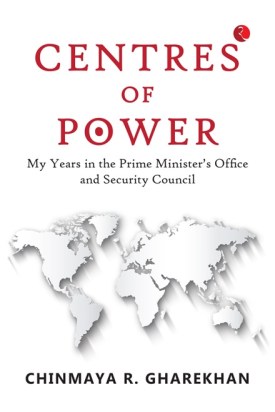Diplomats globally are a special tribe in the larger constituency of civil servants. They represent their respective countries with foreign interlocutors in the continuous power game among nations that is the systole and diastole of international relations. Some among them are chosen to be at the centre of power in their parent state (usually the president or prime minister’s office in democracies) and a very small percentage of this select lot get to represent their nation at the very apex of the global power game — the United Nations Security Council (UNSC).
Chinmaya R Gharekhan, author of the book under review, is counted among India’s most accomplished and low-profile mandarins who served in the office of two prime ministers – Indira Gandhi and her son Rajiv Gandhi. He later moved to New York in August 1986 as India’s permanent representative (PR) to the UN. During this assignment at the UN, Iraq invaded Kuwait in August 1990, thereby precipitating the first US-led Gulf war in January 1991 – an action-packed period that also marked the end of the Cold War. Ambassador Gharekhan witnessed this tectonic geostrategic flux from the vantage point of the deliberations within the UN Security Council when India became a non-permanent member of the UNSC in 1991-92.
Centres of Power is a very interesting two-in-one book, the first part being a lucid account by ambassador Gharekhan of his years in the PMO (prime minister’s office) in Delhi; and the second part dwells on the 1991 war for Kuwait and the manner in which Iraq was punished by the USA for its feckless invasion.

The Delhi part, which is a little over 180 pages, is a granular account of how the author joined the PMO in February 1981 and his interaction with PM Indira Gandhi. A keen observer of detail, both in relation to the big issues that engaged him professionally and the often ignored personal foibles of his many interlocutors, Gharekhan emerges as a natural raconteur. His pithy remarks about the PM and her style of functioning and the manner in which she kept her senior aides on their toes is both insightful and laced with gentle wit.
The PMO in India has traditionally been the nerve centre for conducting foreign policy and both Nehru and his daughter Indira Gandhi were hands-on foreign ministers during their respective tenures.
This section of the book is neatly divided into 18 chapters that include the Pakistan conundrum, Sri Lanka, the NAM (Non-Aligned Movement) and CHOGM (Commonwealth Heads of Government) summits, the beginning of the Punjab problem, the hijacking of an Indian Airline airbus by Khalistan supporters and the assassination of PM Indira Gandhi in October 1984.
The last five chapters in this section deal with the Rajiv Gandhi tenure and the author’s brief but perceptive observations. These are nuanced and devoid of any post-facto pontificating, which burnishes the book. In mid-1986, after working with a second PM for about 20 months, Gharekhan made his way to New York where, as he notes, he “was literally air dropped on to my new assignment!”
The pithy observations about the two PMs are insightful in an objective manner, and while Indira Gandhi is introduced as a ‘hands-on’ prime minister who had an instinct for foreign policy (largely due to the many years spent as her father PM Jawaharlal Nehru’s official hostess), her personal peeves and petulance are also noted. The inordinate amount of time she spent on relatively trivial tasks is noted – as also her excessive fondness for the UK and the royal family. An interesting description is PM Indira Gandhi as a ‘compulsive sub-editor’ – a phrase used by her media adviser Sharada Prasad.
Rajiv Gandhi’s tenure as the PM and the two years that the author spent with him in the PMO are briskly addressed in five chapters. The Sri Lanka imbroglio, relations with the major powers and complex domestic turbulence had to be addressed and the decision making of a younger incumbent as PM is recounted in an empathetic manner. The concluding assessment of Gharekhan about Rajiv Gandhi is brief but lucid: “There was one thing that worried me about the PM’s style of functioning. Decisions were taken more or less off the cuff and by instinct. He hardly had the time or the inclination to read anything, even brief notes.”
Also read: World’s most expensive cities for expats in 2023
The New York part of the book is the shorter section and focuses in the main on the reckless and indefensible invasion of Kuwait by President Saddam Husain in August 1990 and the subsequent US-led war of January 1991 that resulted in an emphatic victory for the Pentagon. As Gharekhan recounts, what was expected to become Iraq’s ‘mother of all battles’ became an inglorious ‘mother of all retreats’ as the US military demonstrated its new high-tech military capabilities against a hapless Iraqi army.
This detailed account of the 1991 war for Kuwait (aka the first Gulf War) would be very useful for both the specialist and the lay person, and provides rich insider insights into the functioning of the UN Security Council. What emerges is the cynical transactional manner in which the global ‘centre of power’ with its five permanent members actually operates.
India’s dilemma in that period was exacerbated by the political flux in governance (two short-term PMs — VP Singh and Chandrashekhar) and the many policy mistakes are recalled without rancour and in considerable detail. The Gulf War account ends abruptly and a concluding chapter that pulled all the strands together taking the reader to end 1992 would have been very welcome. A more detailed index would have been desirable.
Be that as it may, the author is to be commended for this volume. The blurb on the book, which describes this as “a jewel by one of India’s finest public servants”, is appropriate.
C Uday Bhaskar is director, Society for Policy Studies








